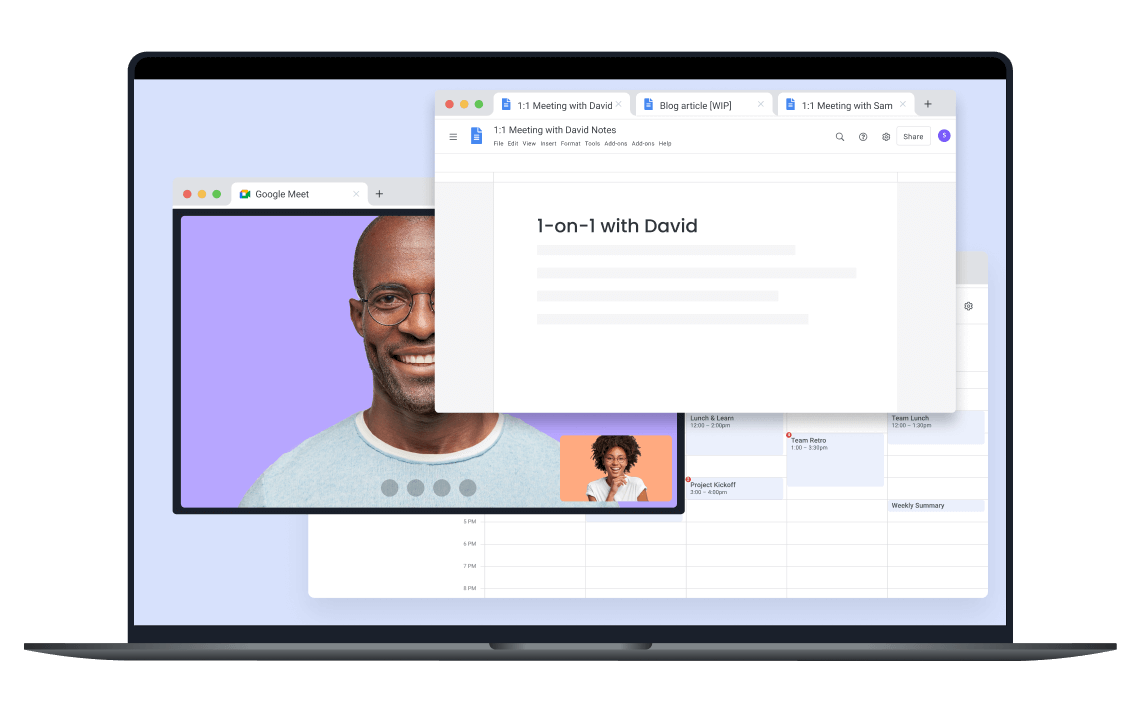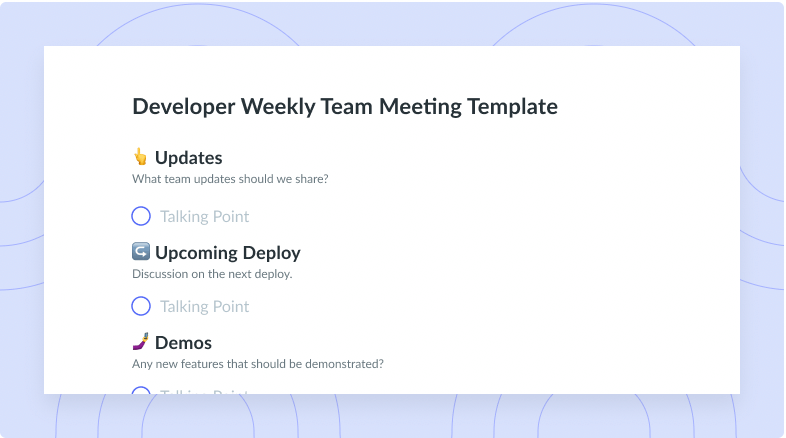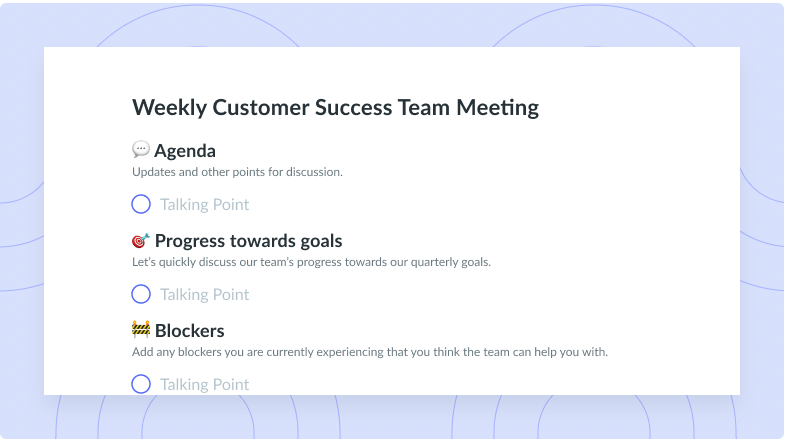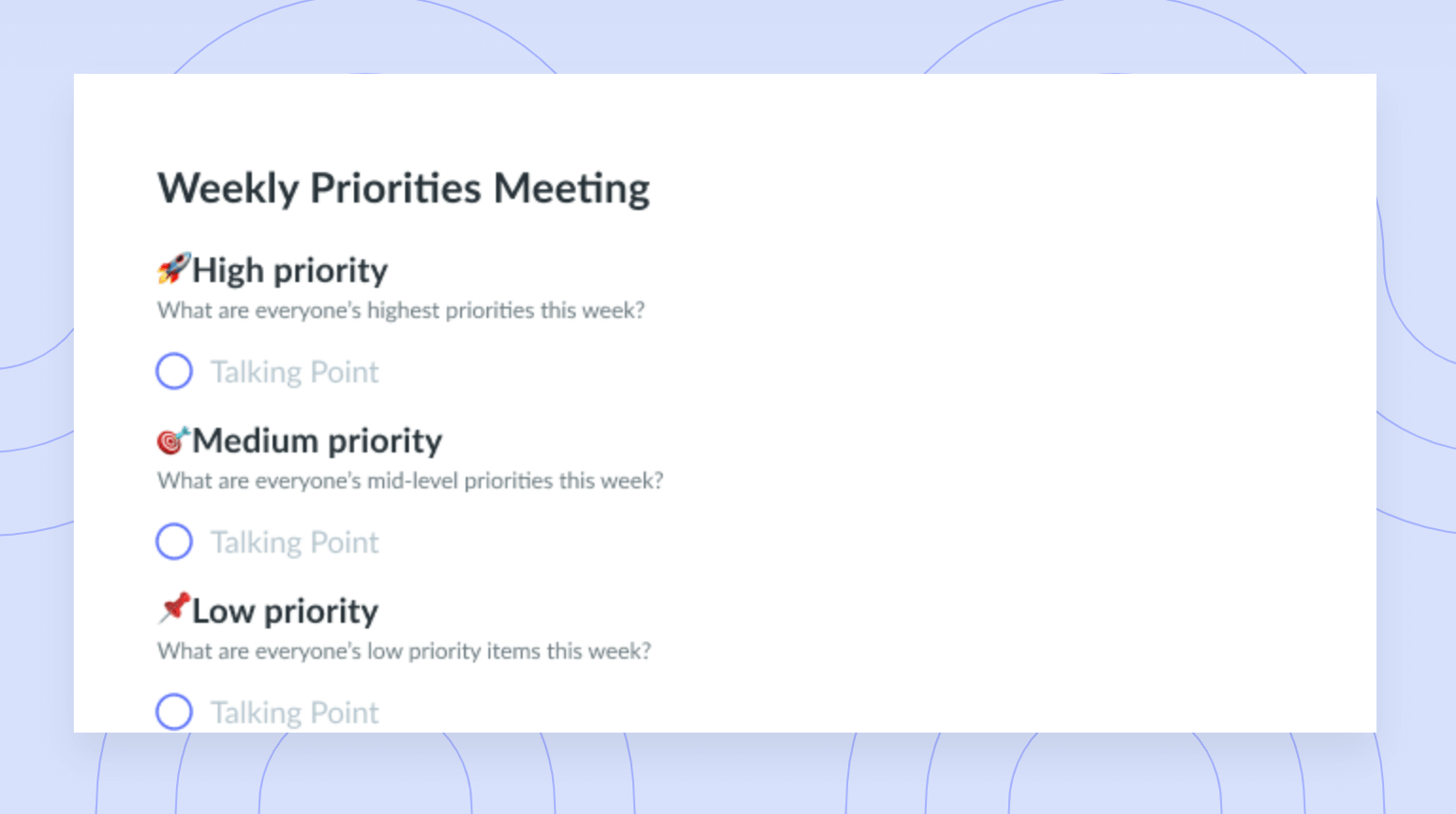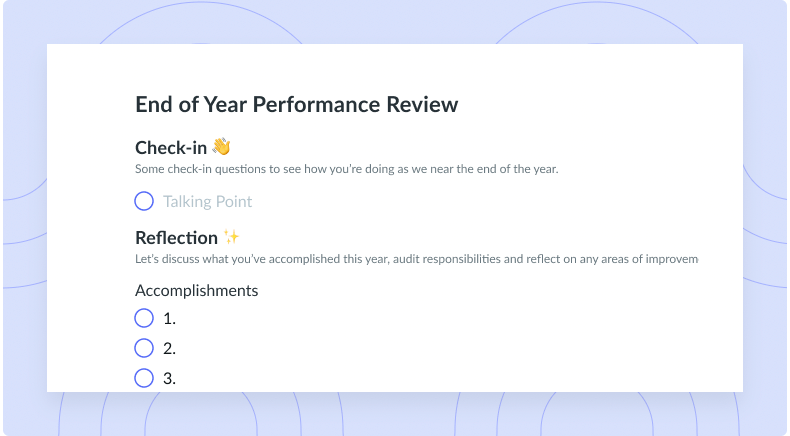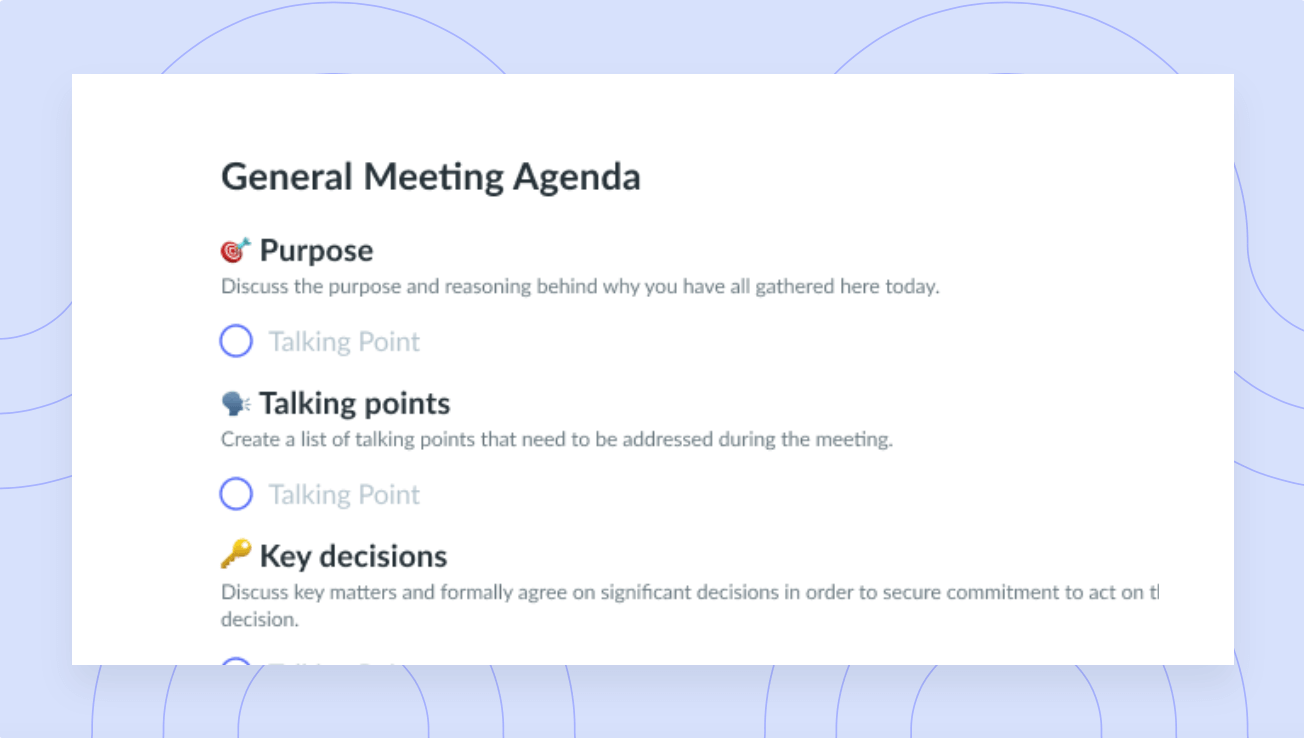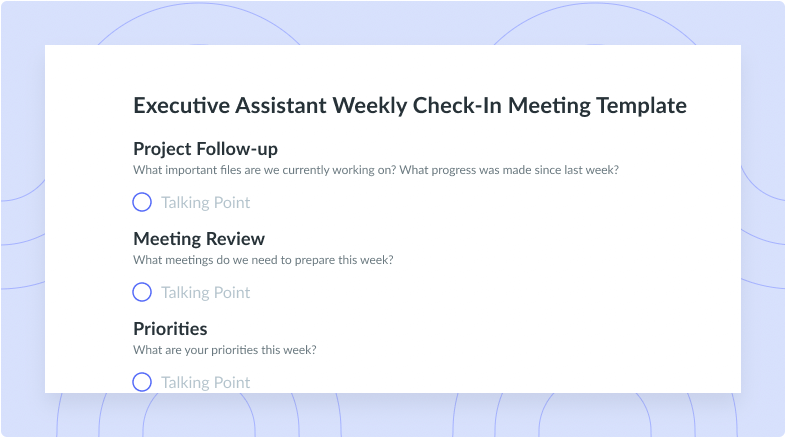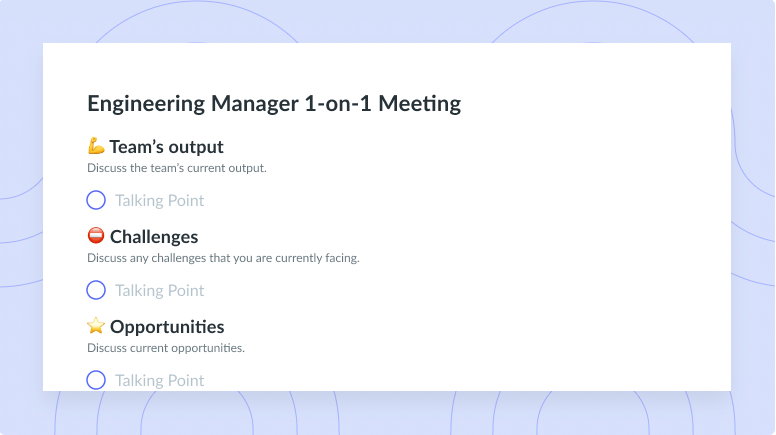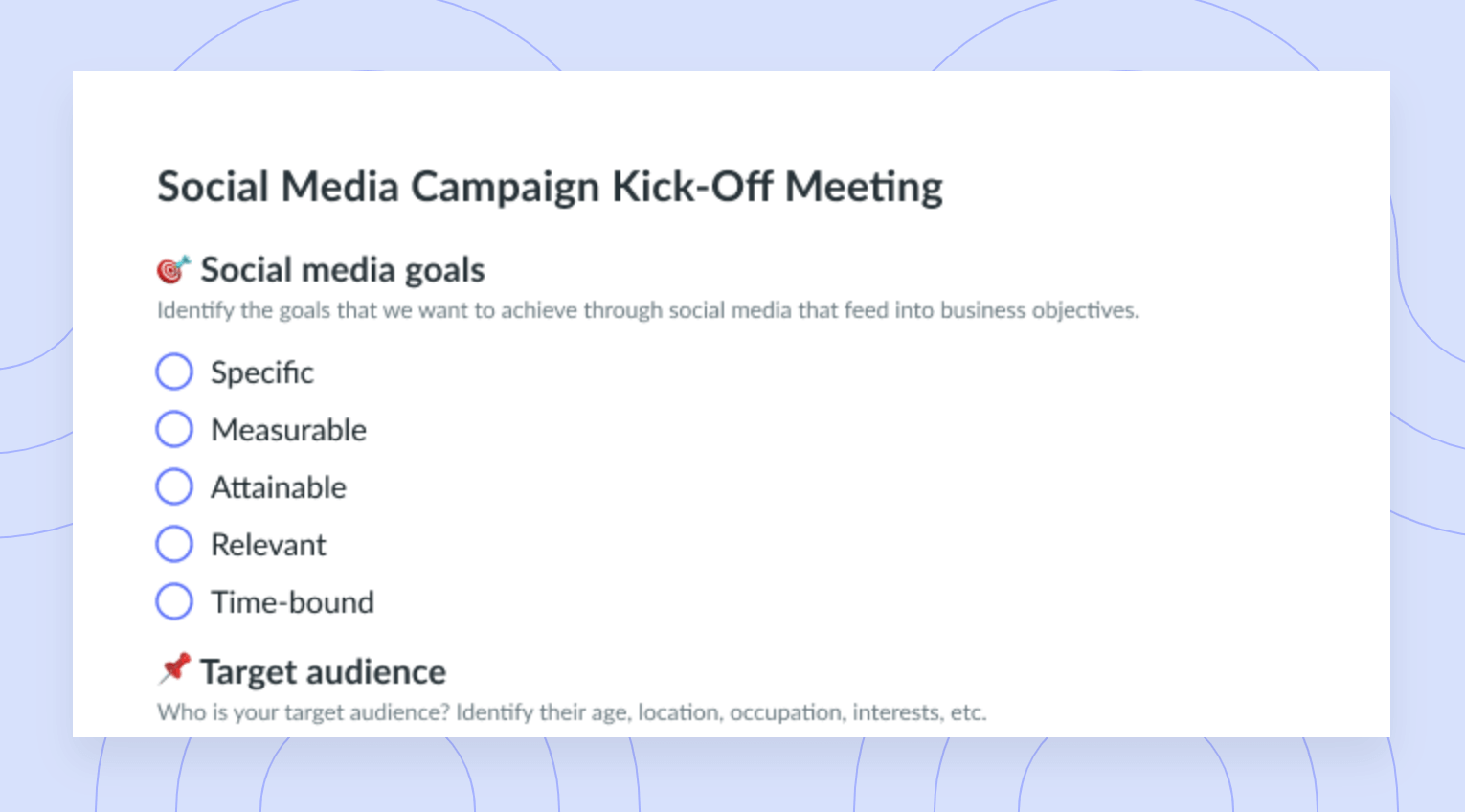8 Ways to Reduce Your Team’s Meeting Overload
If your team is struggling to reduce meeting overload, check out these 8 tips to free up your calendar time.
It’s likely that one of the first things you do when you start the workday, is check your calendar to see what the day has in store.
And it’s never a good feeling to see wall-to-wall meetings with very little time for you to focus on your daily tasks and responsibilities. It’s even worse when this is the case for you and your entire team
If this sounds like you, then you’re experiencing meeting overload. Here’s how to kick meeting overload to the curb and get some time back.
- What is meeting overload?
- The impacts of meeting overload on your team
- 8 ways to reduce your team’s meeting overload
What is meeting overload?
Meeting overload is when someone is—you guessed it—overloaded with meetings. When someone’s calendar and workday are overloaded with meetings, they have little time to work on their daily tasks or action items on their to-do list. Meeting overload can also mean that people attend unnecessarily long or unproductive meetings.
Experiencing meeting overload can also diminish an employee’s work-life balance, leading to stress and lower morale. Individuals may also feel like they have to work overtime to accomplish their tasks since all their standard working hours are spent in meetings.
The impacts of meeting overload on your team
As a manager, it’s important to watch out for the impacts of meeting overload your team could be experiencing. Some warning signs to keep an eye out for are:
- Dissatisfied employees: Meeting overload can take a toll on the well-being of your team. When your team members are constantly in meetings, they could feel frustrated, unhappy, or annoyed that they are again spending their day in meetings. They could also feel as if they’ve wasted their time in a meeting that either went long or didn’t have a productive conversation.
- Decreases in productivity: Managers will likely see a dip in productivity when their team struggles with meeting overload. Even top-performing team members will struggle to complete their regular tasks. In one-on-ones with these employees, you’ll likely notice that they mention falling behind on their responsibilities and day-to-day tasks.
- Financial loss: Meeting overload can also cost a company valuable money in the long run. This occurs when an organization pays an employee to attend an abundance of “unnecessary” meetings, which means they don’t have time to complete actionable tasks to get the business closer to its goals.
- Burnout: Eventually, meeting overload will lead to burnout. There are physical and mental warning signs of burnout, including feeling exhausted, having trouble sleeping, experiencing headaches, having a negative or cynical outlook, feeling helpless, and losing motivation.

Run efficient meetings, come to a decision, and get back to work
Level up your meeting habits to boost engagement and productivity with a collaborative meeting agenda. Try a tool like Fellow!

8 ways to reduce your team’s meeting overload
If your team is struggling with meeting overload, here are eight ways to reduce the feelings accompanying it.
- Make meetings shorter
- Cancel meetings that don’t have an agenda
- Conduct a meeting audit
- Use a meeting timer
- Enforce meeting-free days
- Collect meeting feedback
- Only invite attendees who provide value
- Leverage asynchronous meetings
1Make meetings shorter
One way to reduce meeting overload is to have shorter meetings.
In fact, an internal company experiment conducted at Fellow showed that scheduling meetings for shorter durations—specifically 50 minutes instead of 60 minutes and 25 minutes instead of 30 minutes—can significantly improve meeting efficiency and attendees’ ability to focus on critical priorities.
This strategy gives your employees some time back to work on their daily tasks while ensuring conversations stay on track. Plus, attendees will be more attentive to the agenda since there is less time to work through talking points and have the discussions that need to take place.
2Cancel meetings that don’t have an agenda
Before you join your next meeting, think: does it have an agenda?
If not, consider canceling until it does. Meetings without an agenda are likely to be unorganized, run long, and have conversations that are all over the place.
With Fellow’s Time Saver automation, meetings with no agenda will either be automatically cancelled (freeing up room in your calendar) or prompt attendees with the option to cancel manually.
Not sure what to put in the agenda or where to start? Take advantage of Fellow’s long list of meeting agenda templates to get you started. There, your team can collaborate on meeting agendas and talking points, assign clear action items and takeaways for every meeting, and even save templates and agendas for recurring meetings.
3Conduct a meeting audit
Managers should regularly conduct meeting audits. This is done by consistently checking all meetings that employees take part in within your calendar and your team’s calendar. This audit helps you narrow down if the meeting is at the correct cadence, is too long or too short, and has an attendee list that makes sense.
To get started, use Fellow’s meeting audit agenda template; from there, check out the productivity patterns of these meetings with our analytics feature. Here, you’ll be able to see analytics for how many hours your organization spends in meetings, so you can visualize how big the problem of meeting overload actually is.
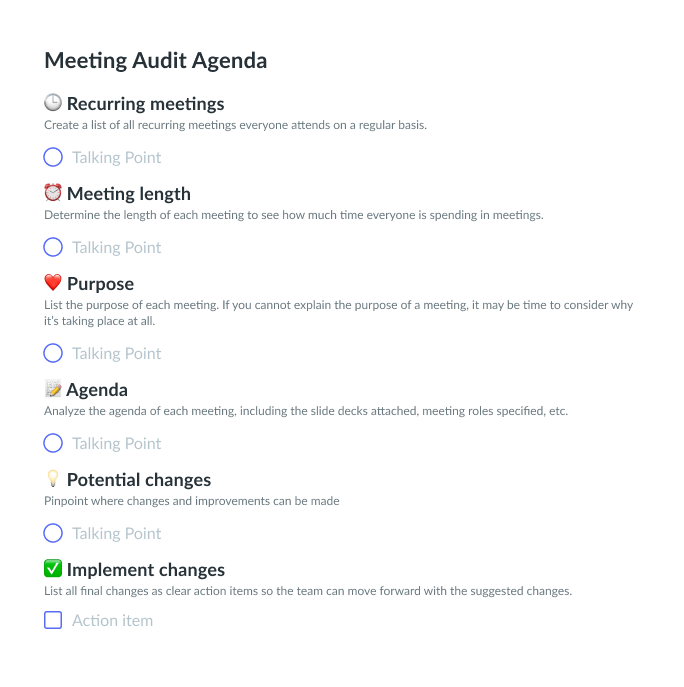
4Use a meeting timer
Another way to reduce meeting overload is to set a meeting timer. A meeting timer can help ensure a meeting doesn’t exceed its allotted time, cutting into the time employees need to work through their daily tasks.
When teams use Fellow, they can take advantage of the meeting timer that’s already built into the tool. Once your meeting starts, you’ll see a countdown clock under the note’s title. This will reflect the amount of time remaining in the meeting and will count down as the meeting progresses.
The countdown clock will turn orange once the meeting has five minutes remaining. This prompts attendees to wrap up the meeting and end with action items.

5Enforce meeting-free days
Next up, consider implementing meeting-free days across your team. These are days within the work week that don’t have any meetings. This means no team meetings, one-on-ones, recurring meetings, or any other kind of meeting you may typically have. Employees should take advantage of this day to focus on deep work as well as tasks that need complete focus and zero interruptions.
Using a tool that has the functionality already baked in is the best and easiest way to implement a no meeting day is by. Fellow enables company leaders to set a no meeting day for their organization as part of the Meeting Guidelines feature set, so that any time someone tries to schedule a meeting on that day, they are automatically prompted to find another time.
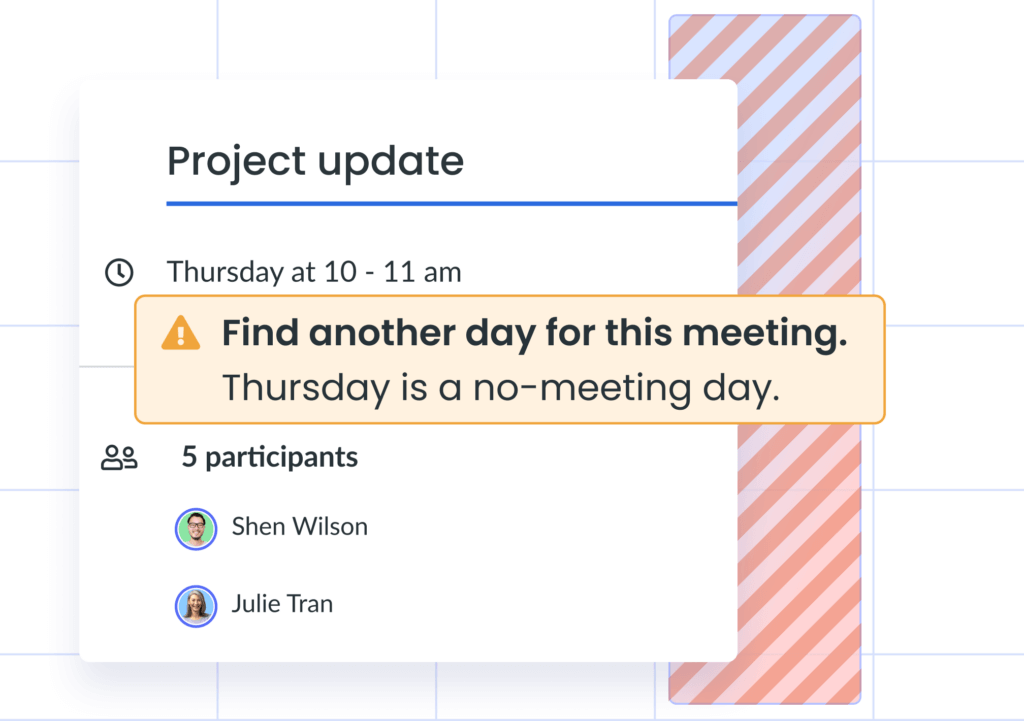
6Collect meeting feedback
If you’re unsure if a meeting on the calendar is productive or worth having, just ask! Collect meeting feedback to determine which meetings aren’t productive or need adjusting. This is also a great way to find out if the meeting simply needs a cadence change, meaning it can take place every other week instead of every week.
With Fellow, you can incorporate feedback into your team’s day-to-day experience and track progress over time. Fellow’s meeting feedback feature enables you to collect real-time feedback, including anonymous feedback to encourage team members to share their thoughts without fear of repercussions.
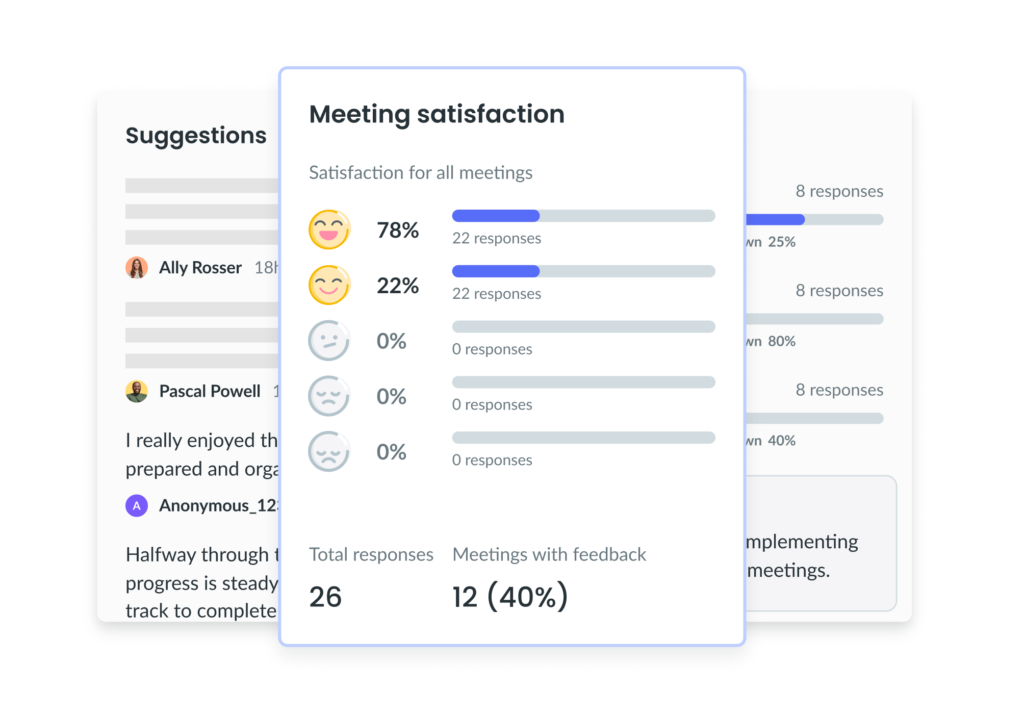
7Only invite attendees who provide value
No one likes attending a virtual or in-person meeting and just sitting there silently.
When organizing meetings and gathering a list of attendees, only invite those who need to be there and who will provide value to the conversation. The fewer attendees a meeting has, the better the chances the discussions will stay on track.
It’s common to get “invite happy” and add as many attendees as you think are necessary, but it’s fine to keep the list short and send meeting notes to those who may need the information after the meeting ends.
8Leverage asynchronous meetings
Last but not least, consider asynchronous meetings. These are meetings that don’t happen in real time. It’s common for remote teams across various time zones to use this meeting format to disseminate information and knowledge sharing and get people’s thoughts on specific topics that don’t need to be discussed immediately.
One of the main benefits of asynchronous meetings is they offer higher flexibility and fewer meetings on your calendar. However, setting clear expectations with your teammates about when the meeting agenda should be ready to go is still essential.
Another great benefit is these meetings allow for flexibility because there’s less pressure to answer immediately. When there isn’t this massive pressure on team members to respond as quickly as possible, they can focus on high-priority tasks and respond when they can give the information their full attention.
Pro tip: Fellow is the asynchronous meeting software that empowers managers and their teams to collaborate on meeting agendas and talking points, save templates and agendas for recurring meetings, assign clear action items and takeaways for every meeting, request feedback from meeting attendees, and more!
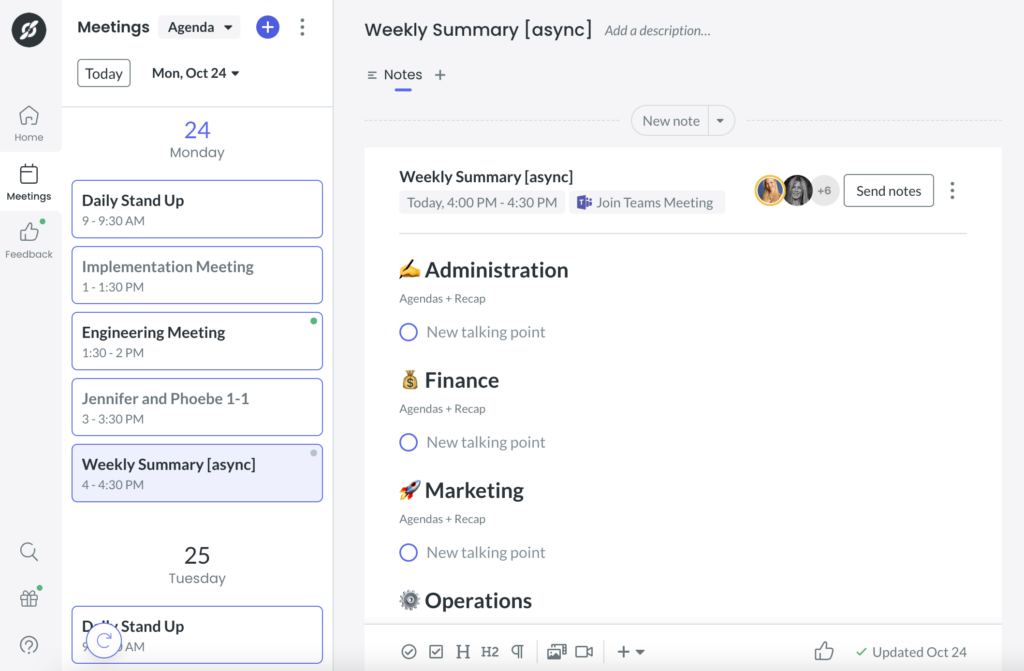
Don’t overdo it!
While meetings can be a great place to have meaningful conversations, solve challenges, and brainstorm new strategies, they can quickly become unproductive and stressful. To avoid meeting overload, keep meetings concise, time block your calendar when necessary, and only invite those who will make the conversation productive.
And of course, consider a tool like Fellow that offers meeting timers, thorough agendas, and meeting and team feedback.





